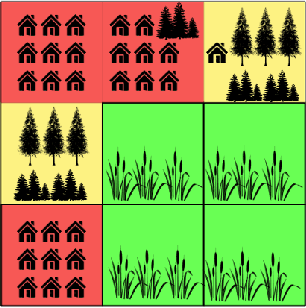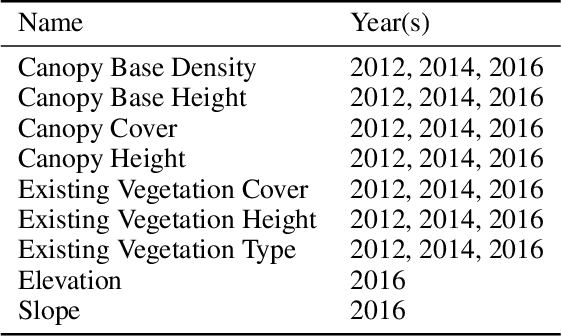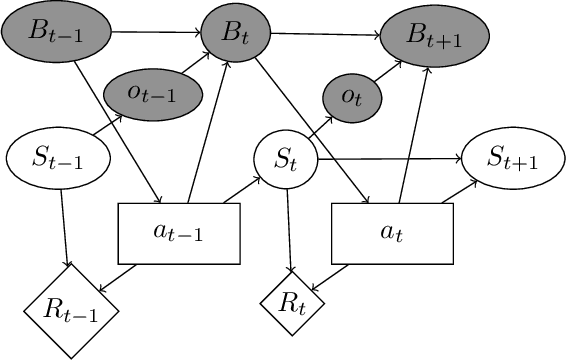Ross Shachter
Uncertainty Aware Wildfire Management
Oct 15, 2020



Abstract:Recent wildfires in the United States have resulted in loss of life and billions of dollars, destroying countless structures and forests. Fighting wildfires is extremely complex. It is difficult to observe the true state of fires due to smoke and risk associated with ground surveillance. There are limited resources to be deployed over a massive area and the spread of the fire is challenging to predict. This paper proposes a decision-theoretic approach to combat wildfires. We model the resource allocation problem as a partially-observable Markov decision process. We also present a data-driven model that lets us simulate how fires spread as a function of relevant covariates. A major problem in using data-driven models to combat wildfires is the lack of comprehensive data sources that relate fires with relevant covariates. We present an algorithmic approach based on large-scale raster and vector analysis that can be used to create such a dataset. Our data with over 2 million data points is the first open-source dataset that combines existing fire databases with covariates extracted from satellite imagery. Through experiments using real-world wildfire data, we demonstrate that our forecasting model can accurately model the spread of wildfires. Finally, we use simulations to demonstrate that our response strategy can significantly reduce response times compared to baseline methods.
Proceedings of the Fourth Conference on Uncertainty in Artificial Intelligence (1988)
Apr 13, 2013Abstract:This is the Proceedings of the Fourth Conference on Uncertainty in Artificial Intelligence, which was held in Minneapolis, MN, July 10-12, 1988
Proceedings of the Fifth Conference on Uncertainty in Artificial Intelligence (1989)
Apr 13, 2013Abstract:This is the Proceedings of the Fifth Conference on Uncertainty in Artificial Intelligence, which was held in Windsor, ON, August 18-20, 1989
 Add to Chrome
Add to Chrome Add to Firefox
Add to Firefox Add to Edge
Add to Edge